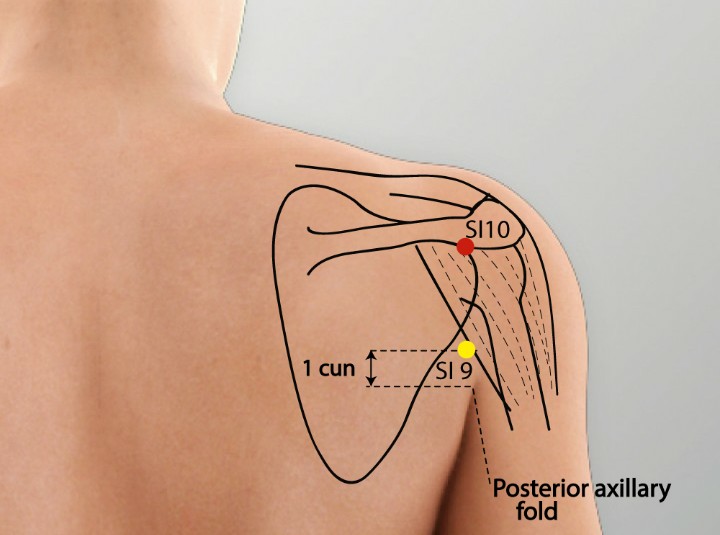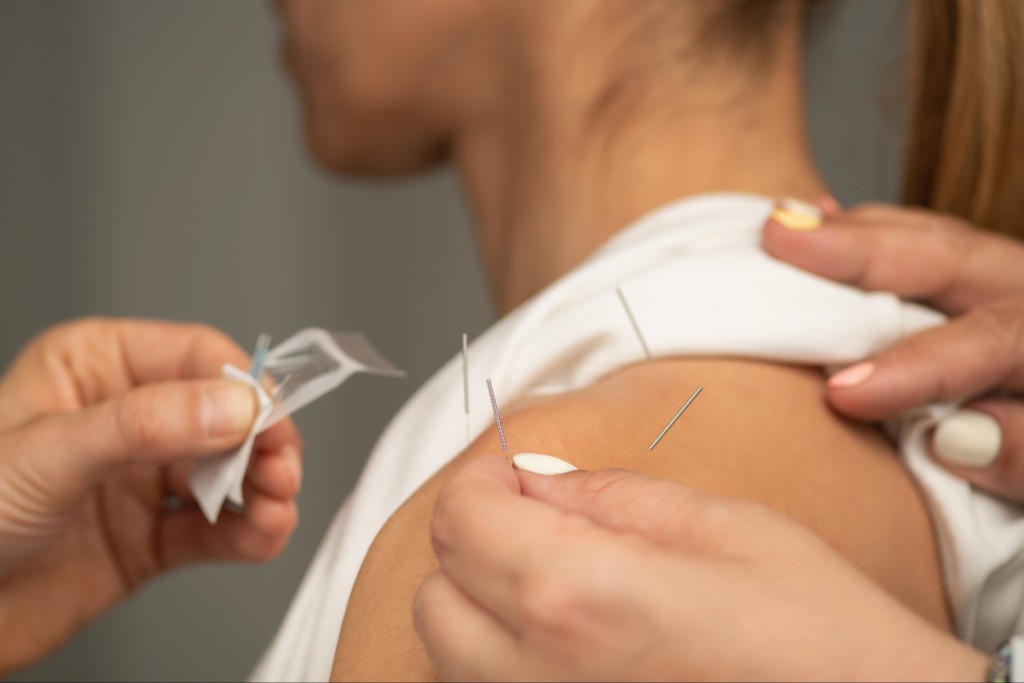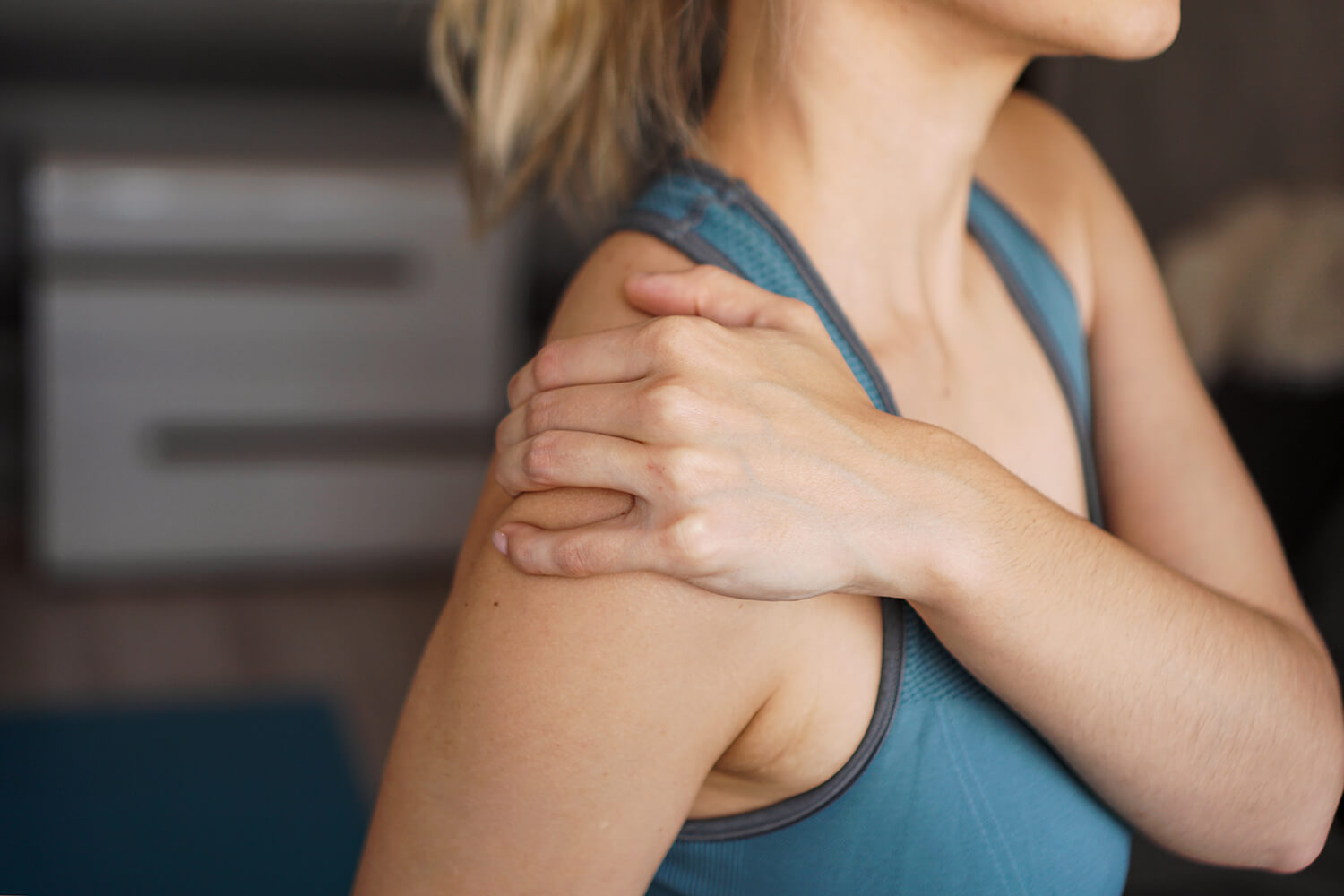Shoulder Dislocation and Acupuncture Treatment in Tokyo: A Comprehensive Guide
Shoulder dislocation is a common injury where the head of the humerus (upper arm bone) is forcibly displaced from its socket in the glenoid cavity of the scapula (shoulder blade). The shoulder is the body’s most mobile joint, allowing a wide range of motions such as lifting, rotating, and reaching. However, this mobility comes at the cost of stability, making the shoulder highly susceptible to dislocations, especially among athletes, individuals involved in physical labor, and those with a history of shoulder injuries.
Shoulder dislocations can lead to significant pain, immobility, and, if not properly managed, recurrent dislocations or long-term complications like arthritis or rotator cuff damage. Conventional treatments include immobilization, physical therapy, medications, and, in severe cases, surgery. However, many patients turn to complementary therapies like acupuncture to manage pain, reduce inflammation, and support recovery without invasive procedures.
This comprehensive article delves into the causes, symptoms, and treatments of shoulder dislocation, with a particular focus on how acupuncture can serve as an effective treatment option. Backed by scientific evidence and practical insights, this guide aims to inform and empower readers seeking holistic solutions for shoulder dislocation recovery.
- Understanding Shoulder Dislocation
- Anatomy of the Shoulder
- Types of Shoulder Dislocation
- Causes and Risk Factors
- Symptoms of Shoulder Dislocation
- Diagnosis
- Acupuncture for Shoulder Dislocation
- How Acupuncture Helps
- Acupuncture Points for Shoulder Dislocation
- Treatment Process
- Benefits of Acupuncture for Shoulder Dislocation
- Limitations and Considerations
- Preventing Shoulder Dislocation
- Conclusion
Understanding Shoulder Dislocation
Anatomy of the Shoulder
The shoulder is a ball-and-socket joint comprising the humerus, scapula, and clavicle (collarbone). Key structures include:
Maybe You Need:
- Glenoid Cavity: A shallow socket in the scapula that houses the humeral head.
- Labrum: A ring of cartilage around the glenoid, enhancing joint stability.
- Rotator Cuff: Four muscles (supraspinatus, infraspinatus, teres minor, subscapularis) and their tendons that stabilize the joint and enable movement.
- Ligaments and Capsule: Connective tissues that reinforce the joint.
- Bursa: Fluid-filled sacs that reduce friction between tissues.
The shoulder’s design prioritizes mobility over stability, making it prone to dislocation when subjected to trauma or excessive force.

Types of Shoulder Dislocation
Shoulder dislocations are classified based on the direction of humeral displacement:
- Anterior Dislocation (90-95% of cases): The humeral head moves forward, often due to a fall on an outstretched arm or a direct blow. Common in sports like football or wrestling.
- Posterior Dislocation (2-4%): The humeral head shifts backward, typically from seizures, electric shocks, or a blow to the front of the shoulder.
- Inferior Dislocation (rare): The humeral head displaces downward, often from extreme hyperabduction of the arm.
Dislocations can also be:
- Partial (Subluxation): The humeral head partially exits the socket and returns spontaneously.
- Complete: The humeral head fully dislocates, requiring manual reduction.
Recurrent dislocations may occur if ligaments or the labrum are damaged, leading to chronic instability.

Causes and Risk Factors
Shoulder dislocations result from acute trauma or underlying joint instability. Common causes include:
- Trauma: Falls, sports injuries, or accidents (e.g., car crashes) that force the arm into extreme positions.
- Repetitive Stress: Overuse in activities like swimming or throwing can weaken stabilizing structures.
- Congenital Factors: Some individuals have naturally loose ligaments (joint hypermobility), increasing dislocation risk.
- Previous Dislocations: A history of dislocation weakens the joint, making recurrence more likely.
Risk factors include:
- Age (younger individuals, especially males, are more prone due to active lifestyles).
- Participation in contact sports (e.g., rugby, hockey).
- Poor muscle strength or coordination.
- Genetic predisposition to ligament laxity.
Symptoms of Shoulder Dislocation
Symptoms of a dislocated shoulder are often immediate and severe:
- Intense pain, especially during movement.
- Visible deformity (e.g., a squared-off shoulder or protruding bone).
- Swelling and bruising around the joint.
- Inability to move the arm or shoulder.
- Numbness or tingling if nerves are compressed.
- Muscle spasms in the shoulder area.
Recurrent dislocations may present with less severe symptoms but increased joint instability.
Diagnosis
Diagnosis involves:
- Physical Examination: Assessing deformity, range of motion, and neurovascular status (e.g., checking for nerve or blood vessel damage).
- Imaging:
- X-rays to confirm dislocation and rule out fractures.
- MRI or CT scans to evaluate soft tissue damage (e.g., labrum, ligaments).
- Medical History: Identifying prior dislocations or contributing factors.
Prompt diagnosis is critical to prevent complications like nerve injury or chronic instability.
Acupuncture for Shoulder Dislocation
Acupuncture, a cornerstone of Traditional Oriental Medicine (TOM), involves inserting thin, sterile needles into specific acupoints along meridians—pathways believed to conduct vital energy. By stimulating these points, acupuncture aims to restore energy balance, alleviate pain, and promote healing.
Modern science explains acupuncture’s effects through:
- Neurochemical Release: Stimulates endorphins, serotonin, and other pain-relieving chemicals.
- Improved Circulation: Enhances blood flow to injured tissues, aiding repair.
- Anti-Inflammatory Effects: Modulates cytokines and immune responses to reduce swelling.
- Muscle Relaxation: Relieves tension and spasms, improving mobility.
Acupuncture is widely used for musculoskeletal injuries, including shoulder dislocation, due to its non-invasive nature, minimal side effects, and ability to complement conventional treatments.

How Acupuncture Helps
Acupuncture addresses the pain, inflammation, and mobility issues associated with shoulder dislocation. Its specific benefits include:
- Pain Relief: By stimulating the release of endorphins and serotonin, acupuncture reduces acute and chronic shoulder pain, improving comfort during recovery.
- Reduced Inflammation: Acupuncture regulates inflammatory markers, decreasing swelling in the joint capsule, ligaments, and surrounding tissues, which alleviates pressure and discomfort.
- Enhanced Blood Flow: Needling promotes circulation to the shoulder, delivering oxygen and nutrients to damaged ligaments, labrum, or muscles, accelerating tissue repair.
- Muscle Relaxation: Acupuncture relieves spasms and tension in the rotator cuff and surrounding muscles (e.g., deltoid, trapezius), reducing stiffness and restoring range of motion.
- Support for Joint Stability: By improving muscle function and reducing pain, acupuncture supports physical therapy efforts to strengthen stabilizing muscles, reducing the risk of recurrence.
- Holistic Recovery: In TOM, acupuncture corrects energy imbalances (e.g., qi stagnation or blood stasis), addressing stress, sleep disturbances, or emotional factors that may hinder healing.
These mechanisms make acupuncture a valuable tool for both acute dislocation recovery and managing chronic instability.
Acupuncture Points for Shoulder Dislocation
Acupuncturists select points based on the patient’s symptoms, the type and severity of the dislocation, and TOM diagnosis, which may involve assessing pulse, tongue, and energy patterns. A combination of local and distal points is used to target the shoulder directly and address systemic factors. Below are key acupoints commonly used for shoulder dislocation, with detailed descriptions:
- LI15 (Jianyu): Located in the depression anterior and inferior to the acromion when the arm is raised. LI15 is a primary point for shoulder pain and stiffness, particularly effective for anterior dislocations. It reduces inflammation, relaxes the rotator cuff muscles, and improves arm mobility.
- LI16 (Jugu): Found in the hollow between the clavicle and scapular spine, near the shoulder joint. This point addresses joint pain, ligament strain, and restricted movement, making it ideal for dislocations involving capsule or labral damage.
- SI9 (Jianzhen): Positioned one cun above the posterior axillary fold on the back of the shoulder. SI9 is used to relieve deep shoulder pain, muscle spasms, and stiffness, especially in posterior dislocations or chronic instability.
- SI10 (Naoshu): Located directly above SI9, in the depression below the scapular spine. SI10 eases pain, reduces inflammation, and enhances shoulder mobility, particularly for injuries affecting the infraspinatus or teres minor.
- GB21 (Jianjing): Situated on the upper trapezius, halfway between the acromion and the seventh cervical vertebra. GB21 relieves tension in the shoulder and neck, reduces muscle spasms, and improves circulation to the joint, aiding recovery from dislocation-related stiffness.
- Local Ashi Points: These are tender spots around the shoulder identified through palpation. Ashi points target specific areas of pain, inflammation, or muscle knots, providing immediate relief and addressing localized damage (e.g., labral tears or capsule strain).

- Distal Points:
- LI4 (Hegu): Located in the webbing between the thumb and index finger. LI4 is a powerful systemic point that reduces pain, promotes qi flow, and calms the nervous system. It is particularly useful for referred shoulder pain and overall healing.
- ST36 (Zusanli): Found four finger-widths below the kneecap, one finger-width lateral to the shinbone. ST36 boosts energy, supports tissue repair, and enhances immune function, aiding recovery from chronic or slow-healing dislocations.
- TE5 (Waiguan): Located two cun above the wrist on the outer forearm, between the radius and ulna. TE5 relieves upper limb pain, reduces swelling, and supports shoulder mobility, especially in acute dislocations with significant inflammation.
Local vs. Distal Strategy: Local points (e.g., LI15, SI9) directly target the dislocated joint, addressing pain, swelling, and tissue damage. Distal points (e.g., LI4, ST36) work systemically to reduce inflammation, enhance energy flow, and support the body’s healing capacity. For acute dislocations, local points may be prioritized to manage swelling and pain, while distal points are emphasized in chronic cases to boost vitality and prevent recurrence.
Customization: The acupuncturist tailors the point selection to the dislocation’s direction (anterior, posterior, or inferior), the stage of recovery (acute vs. chronic), and TOM patterns (e.g., blood stasis for bruising, qi deficiency for slow healing). For example, anterior dislocations may emphasize LI15 and LI16, while posterior dislocations may focus on SI9 and SI10.
Treatment Process
An acupuncture session for shoulder dislocation typically follows these steps:
- Initial Assessment: The acupuncturist evaluates the patient’s symptoms, medical history, and shoulder function (e.g., pain level, range of motion). In TOM, pulse and tongue diagnosis may identify energy imbalances like qi stagnation or blood stasis.
- Needle Insertion: Sterile, single-use needles are inserted into selected acupoints. Patients may feel a mild tingling, warmth, or dull ache (known as “de qi”), indicating effective stimulation. Pain is minimal.
- Needle Retention: Needles remain in place for 15-30 minutes while the patient rests comfortably, often with the shoulder supported to avoid strain.
- Adjunct Therapies:
- Electroacupuncture: Mild electrical currents are applied to needles to enhance pain relief and tissue repair, particularly for chronic instability.
- Moxibustion: Burning mugwort near acupoints adds warmth, promoting circulation and reducing stiffness.
- Cupping: Suction cups are applied to the shoulder to relieve muscle tension and improve blood flow.
- Post-Treatment Guidance: The acupuncturist may recommend gentle stretches, posture adjustments, or ice/heat therapy to support recovery.
Sessions last 30-60 minutes, with 1-2 sessions per week recommended for 4-12 weeks, depending on the injury’s severity and recurrence risk. Acute dislocations may require fewer sessions, while chronic instability benefits from longer-term treatment.

Scientific Evidence
Research supports acupuncture’s efficacy for shoulder pain and post-dislocation recovery:
- A 2017 study in The Journal of Pain found acupuncture significantly reduced shoulder pain and improved function in patients with acute joint injuries, including dislocations, compared to sham acupuncture.
- A 2021 meta-analysis in Evidence-Based Complementary and Alternative Medicine concluded that acupuncture is effective for musculoskeletal pain, with lasting benefits for shoulder conditions like instability or post-traumatic pain.
- A 2019 trial in Clinical Rehabilitation showed that acupuncture, combined with physical therapy, improved pain scores and shoulder stability in patients with recurrent dislocations more than therapy alone.
While specific studies on acupuncture for shoulder dislocation are limited, its proven benefits for shoulder pain, inflammation, and mobility suggest it is a valuable treatment option. Further research is needed to establish standardized protocols.
Benefits of Acupuncture for Shoulder Dislocation
- Non-Invasive: Acupuncture avoids the risks and recovery time associated with surgery.
- Minimal Side Effects: Unlike medications, acupuncture rarely causes adverse effects, though minor bruising may occur.
- Complementary Therapy: It enhances physical therapy and immobilization outcomes by managing pain and supporting tissue repair.
- Personalized Approach: Treatments are tailored to the patient’s symptoms, injury type, and TOM diagnosis.
- Holistic Benefits: Acupuncture may improve sleep, reduce stress, and enhance overall well-being, aiding recovery.
Limitations and Considerations
Acupuncture is not a standalone cure and has limitations:
- Variable Response: Some patients experience significant relief, while others see modest improvements.
- Time and Cost: Multiple sessions may be needed, and insurance coverage varies, leading to out-of-pocket expenses.
- Practitioner Skill: Outcomes depend on the acupuncturist’s expertise in treating shoulder injuries.
- Not a Substitute for Reduction: Acupuncture cannot reposition a dislocated shoulder; closed reduction is required first.
Contraindications include bleeding disorders, pregnancy (for certain points), or pacemakers (if electroacupuncture is used). Patients should consult their doctor before starting treatment.
Acupuncture is most effective when combined with conventional and lifestyle interventions:
- Physical Therapy: Strengthens stabilizing muscles and restores mobility, while acupuncture manages pain and inflammation.
- Immobilization: Follows reduction to stabilize the joint, with acupuncture supporting recovery during and after this phase.
- Nutrition: Anti-inflammatory foods (e.g., omega-3s, berries) and adequate protein support tissue repair.
- Posture and Ergonomics: Correcting forward head posture or optimizing workstations reduces shoulder strain.
- Stress Management: Techniques like meditation complement acupuncture’s holistic benefits.
A multidisciplinary approach, coordinated with healthcare providers, optimizes outcomes.
Preventing Shoulder Dislocation
Preventing initial and recurrent dislocations is crucial for long-term shoulder health. Strategies include:
- Strengthening Exercises: Focus on rotator cuff and scapular stabilizers using resistance bands or light weights (e.g., external rotation, scapular retraction).
- Proper Technique: Use correct form in sports or repetitive tasks to avoid extreme shoulder positions.
- Warm-Ups and Stretching: Warm up before activity and stretch to maintain flexibility in the shoulder and chest muscles.
- Protective Gear: Wear shoulder braces or padding during high-risk sports.
- Avoid Overuse: Balance activity with rest to prevent weakening of stabilizing structures.
For those with a history of dislocations, regular physical therapy and acupuncture maintenance sessions can reduce recurrence risk.

Conclusion
Shoulder dislocation is a painful and potentially debilitating injury that requires prompt treatment to restore function and prevent complications. While conventional treatments like closed reduction, immobilization, physical therapy, and surgery are effective, they may not address all aspects of recovery or suit every patient due to risks, side effects, or lengthy rehabilitation. Acupuncture offers a safe, non-invasive complement or alternative, providing pain relief, reducing inflammation, and supporting tissue healing through targeted needle therapy.
Scientific evidence and clinical practice underscore acupuncture’s value in managing shoulder dislocation, particularly when integrated with physical therapy and lifestyle changes. By addressing both physical symptoms and underlying imbalances, acupuncture empowers patients to recover fully and maintain shoulder stability. If you’re considering acupuncture for shoulder dislocation, consult a licensed practitioner to develop a personalized treatment plan.
For those seeking a holistic, patient-centered approach to shoulder health, acupuncture is a promising option. With proper care, prevention, and treatment, you can overcome the challenges of shoulder dislocation and enjoy a strong, functional shoulder for years to come.
You need acupuncture treatment for Shoulder dislocation? Contact Fuji Wellness now!
Fuji Wellness:
- Address: 132-0031 Matsushima 1-chome, 21-14, Tokyo, Japan
- Chat with us: Click here
- Email: sunnyphamsensei@gmail.com





